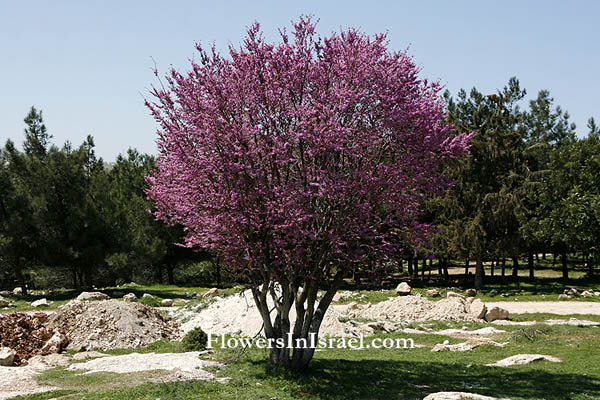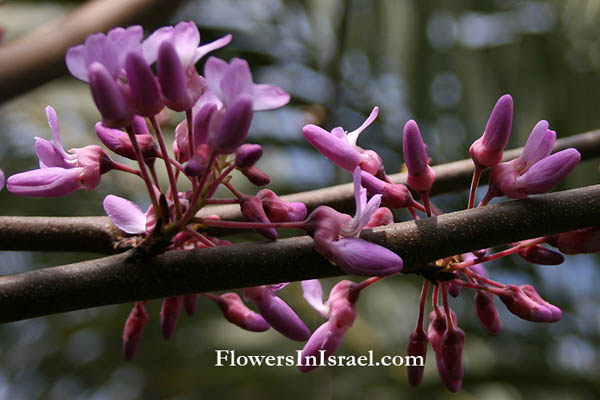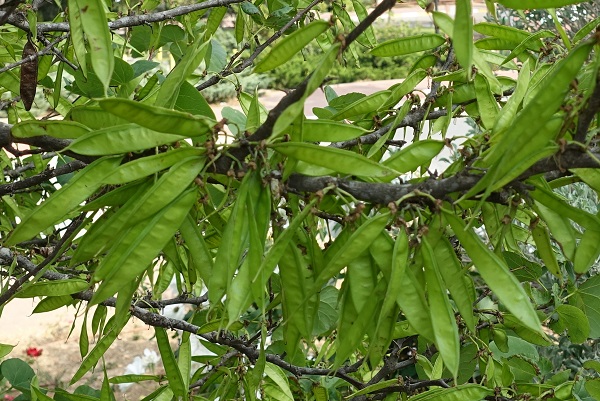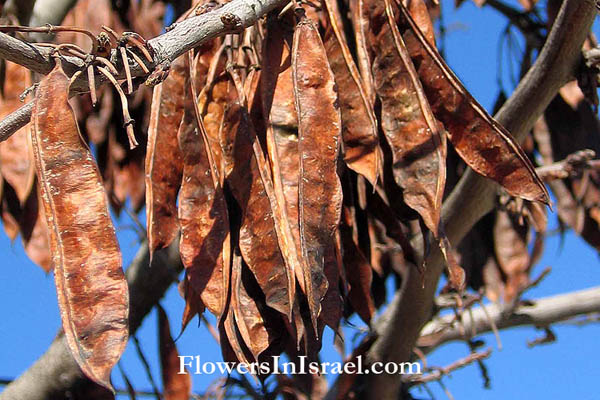Hebrew: כליל החורש, Arabic: زمزريق أثيبي
| Scientific name: | Cercis siliquastrum L. | |
| Common name: | Juda's Tree, Mediterranean Redbud | |
| Hebrew name: | כליל החורש, Clil Hahoresh | |
| Arabic name: | zamziriq 'uthibiun, زمزريق أثيبي | |
| Plant Family: | Caesalpiniaceae, Senna Family, קסאלפיניים |

|
| Life form: | Tree | |
| Stems: | 6 m high, 4 m width, slow growth rate | |
| Leaves: | Alternate, entire, smooth, round or heart-shaped; thin not coriaceous | |
| Flowers: | Small clusters of pink, 15-20 mm long, violet flowers, produced along the branches and trunk before the leaves appear | |
| Fruits / pods: | Long flat pods c. 7.5-9.5 cm long, c. 1.7-1.8 cm broad | |
| Flowering Period: | March, April | |
| Habitat: | Mediterranean maquis and forest | |
| Distribution: | Mediterranean Woodlands and Shrublands, Montane vegetation of Mt. Hermon | |
| Chorotype: | Mediterranean | |
| Summer shedding: | Perennating |

Derivation of the botanical name: Cercis, Greek, kerkis, a weaver’s shuttle, which Theophrastus likened the tree's flattened woody fruits to. siliquastrum, siliqua, pod of a legume; astrum, suffix to nouns indicating incomplete likeness or inferiority, often used to distinguish a wild from a cultivated kind; siliqua (pod) like. Judas Tree, came from the story of Judas Iscariot, the betrayer of Christ. It is said when he hung himself on one of these trees, the flowers turned from white to red because of his blood and the tree's shame. It has been known as "Judas-tree" for well over two hundred years and just how it was that tradition selected this tree, is not clear. The hebrew name klil, כליל, crown. hahoresh, החורש, a grove; the crown of the woods. Due to the abundance of flowers, the tree is called the "abundance of the woods" and is meant to imply the abundance of its flowers.
Bible resources:
|

